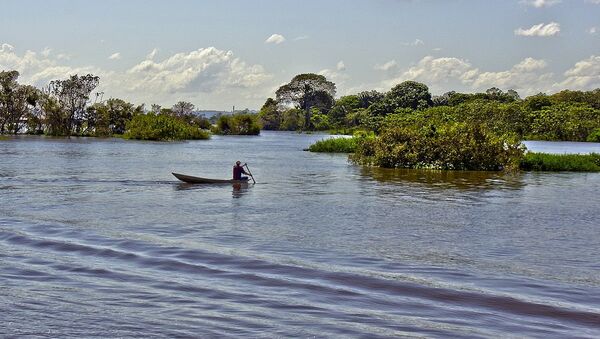The area of deforestation mentioned by the findings is tantamount to the aggregate area of five major cities the size of Sao Paulo, which has population of more than eleven million people.
In an interview with Sputnik Brazil, Fabiano Lopez Silva, head of the Brazilian non-governmental organization Amazonian Victory Foundation, said that at least two major factors had an impact on the Amazon rainforest's deforestation.
Brazil: deforestation in the Amazon increased 29% over last year https://t.co/wfyOZ9SVrw pic.twitter.com/dXAYVzikTC
— Mongabay (@mongabay) 3 декабря 2016 г.
"First of all, the last few years have seen a change in how the deforestation takes place in the southern and north-western regions of the Amazon rainforest, where larger plots of land were subjected to deforestation in the past," he said.
Currently, deforestation occurs in separate areas in the Amazon rainforest's south and northwest, a process that can already be seen with the help of satellites.
Brazil's Amazon #deforestation grows 29% in a year, 7,989 square kilometers of forest cover removed https://t.co/3BkkDLQSYJ pic.twitter.com/oloiZJa9I9
— China Xinhua News (@XHNews) 1 декабря 2016 г.
The second factor is related to an economic crisis that affected the Brazilian states and the entire federation. As a result, less funds are being directed towards agencies responsible for the environmental monitoring of the Amazon rainforest.
"We are monitoring the situation in the basin of the Rio Negro, [the largest left tributary of the Amazon]. In the city of Manaus, we registered an ever-increasing level of forest burning, and in southern areas deforestation was caused by the production of soybeans and livestock pastures," Lopez Silva said.
He added that deforestation also takes place due to the expansion of the cities which need raw materials for construction purposes.
Meanwhile the very air we breath is in jeopardy. #Deforestation in Amazon skyrockets and reaches nearly 8000 km2https://t.co/RCOTlEV2Eh
— Lulu Garcia-Navarro (@lourdesgnavarro) 30 ноября 2016 г.
He described deforestation as a "consistent chain of events rather than isolated phenomena, with one type of activity funded by the previous one."
Deforestation of the Amazon rainforest rose significantly between 1991 and 2004, reaching an annual forest loss rate of 27,423 square kilometers in 2004. Using the 2005 deforestation rates, speculation is rife that the Amazon rainforest may be reduced by 40 percent in two decades.



